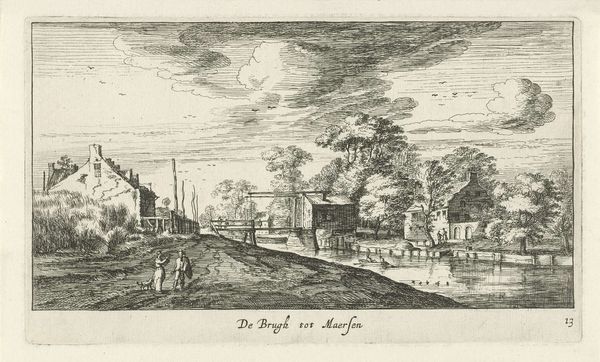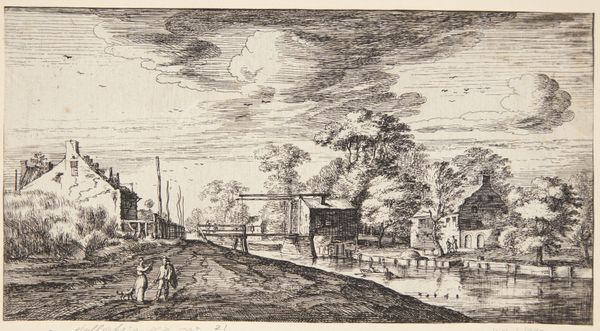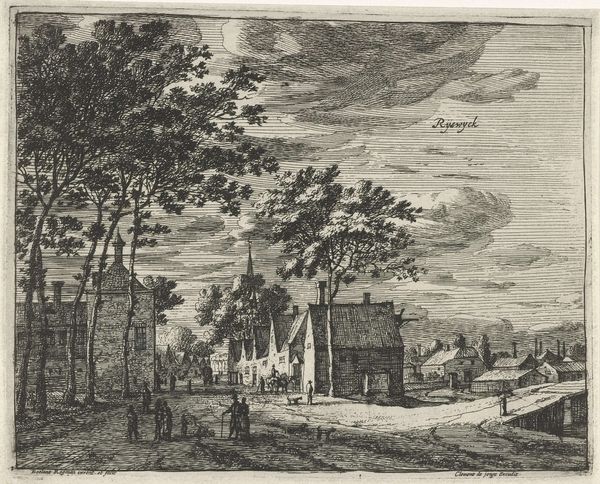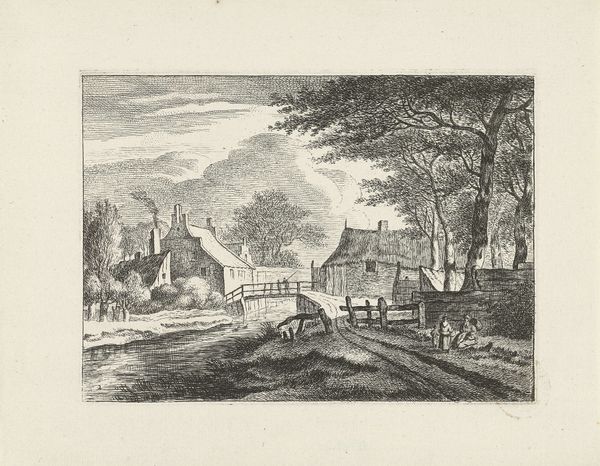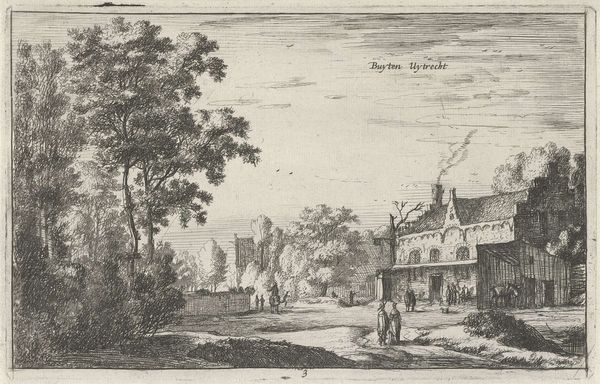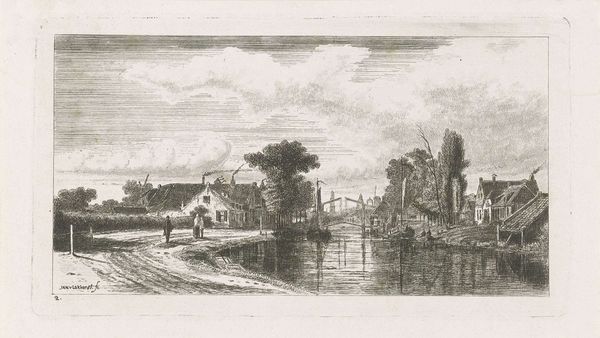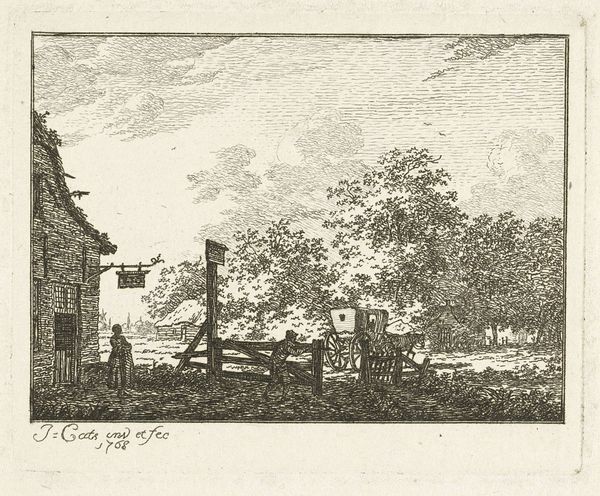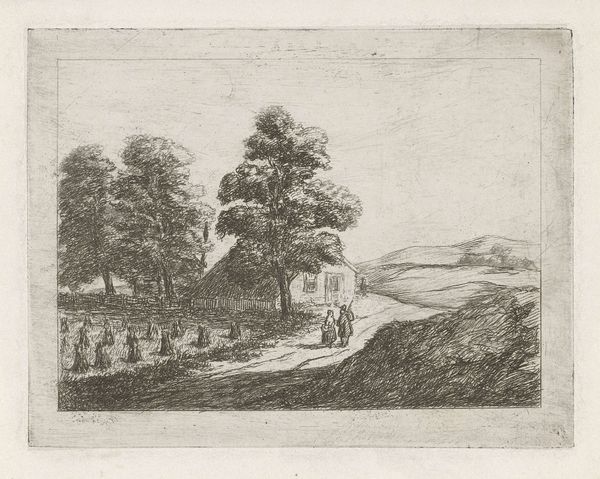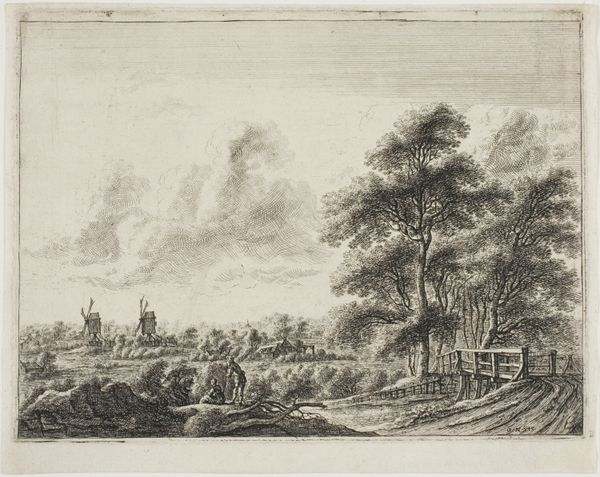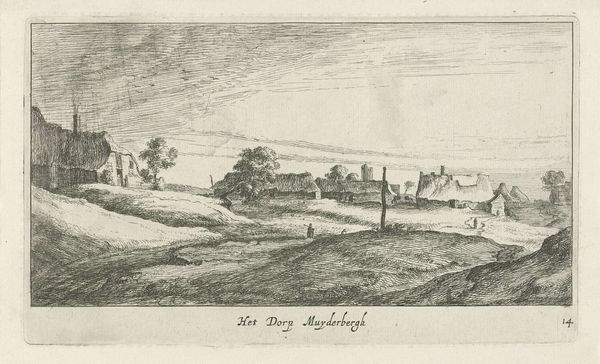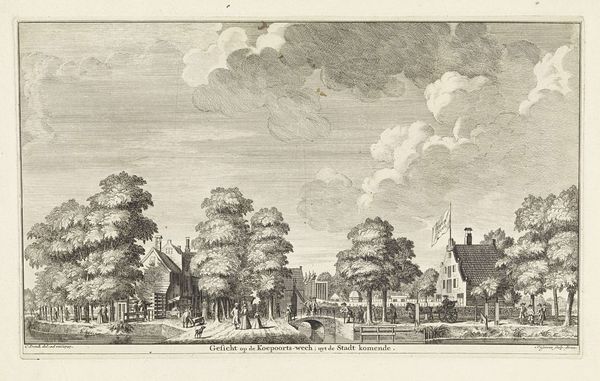
Dimensions: plate: 13.2 Ã 22.6 cm (5 3/16 Ã 8 7/8 in.) sheet: 16 Ã 25.3 cm (6 5/16 Ã 9 15/16 in.) image: 11.6 Ã 21.9 cm (4 9/16 Ã 8 5/8 in.)
Copyright: CC0 1.0
Curator: Here we have Geertruydt Roghman's "The Bridge to Maersen," an etching that captures a slice of 17th-century Dutch life. It's a small but evocative scene. Editor: My first thought is how much the textures convey a sense of place and labor. The sky feels heavy, mirroring the workers on the road, while the details of the bridge and buildings emphasize their construction. Curator: Roghman, though young when she made this, understood how to use line to create a sense of depth and atmosphere. You feel like you could step right into that landscape. It's almost dreamlike to me. Editor: Absolutely. It's interesting to consider the etching process itself. Roghman is physically engaged with the copper plate, using tools to incise lines that define form and space. It's a very material process of making art. Curator: It's more than just the labor though; it's the light and shadow, the way the water reflects the sky. It gives the scene a certain... magic, don't you think? A mundane scene elevated. Editor: Perhaps, but I see the social and economic context too. The bridge isn't just a pretty feature; it's infrastructure. It connects people, facilitates trade, and makes life possible for those who live there. Curator: I agree. It's really a window into another time, and I can appreciate how Roghman captured the simple and yet enchanting beauty of it all. Editor: Exactly. It's a testament to the power of art to capture, not just beauty, but the very fabric of daily life, rendered through a thoughtful, and laborious, process.
Comments
No comments
Be the first to comment and join the conversation on the ultimate creative platform.
